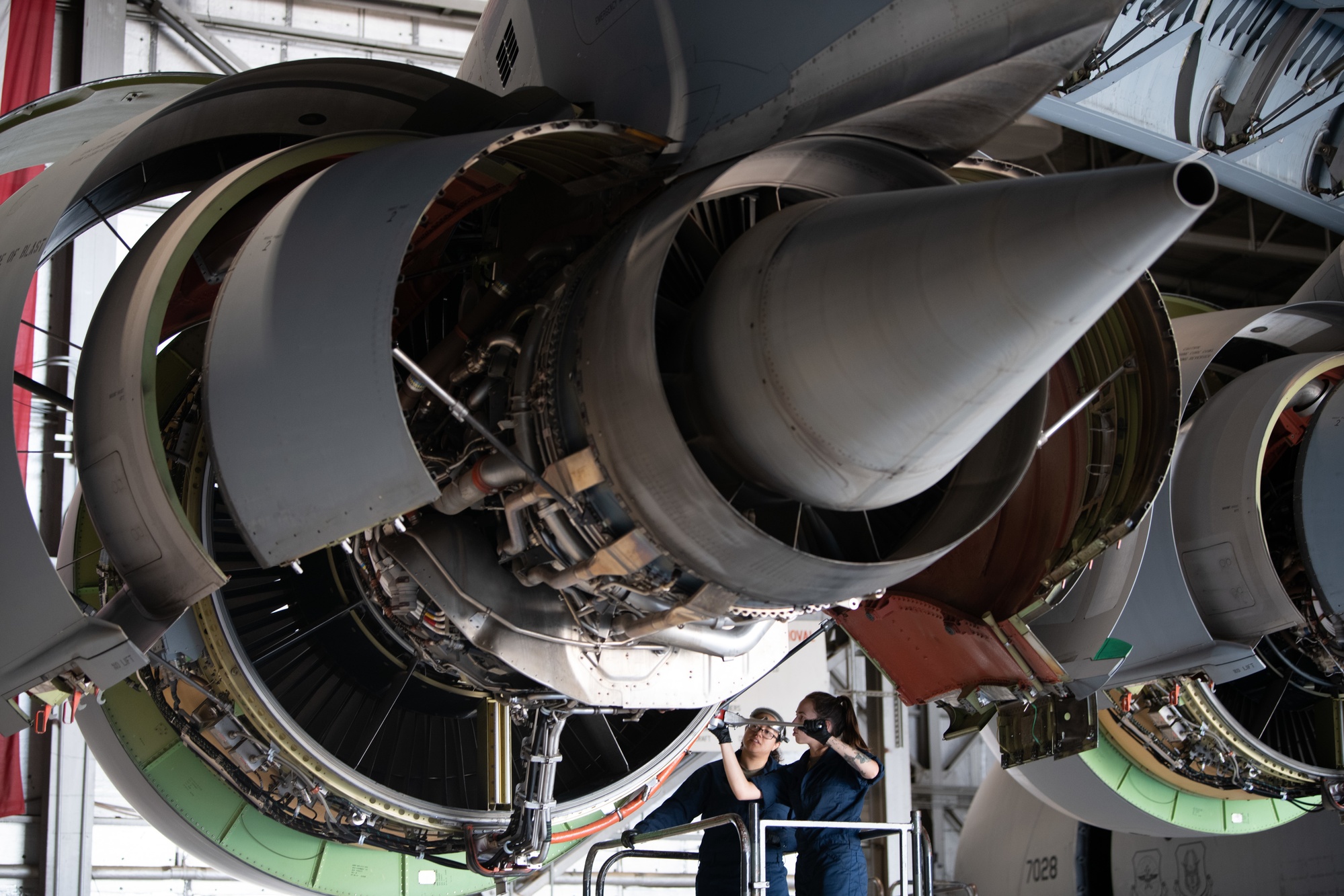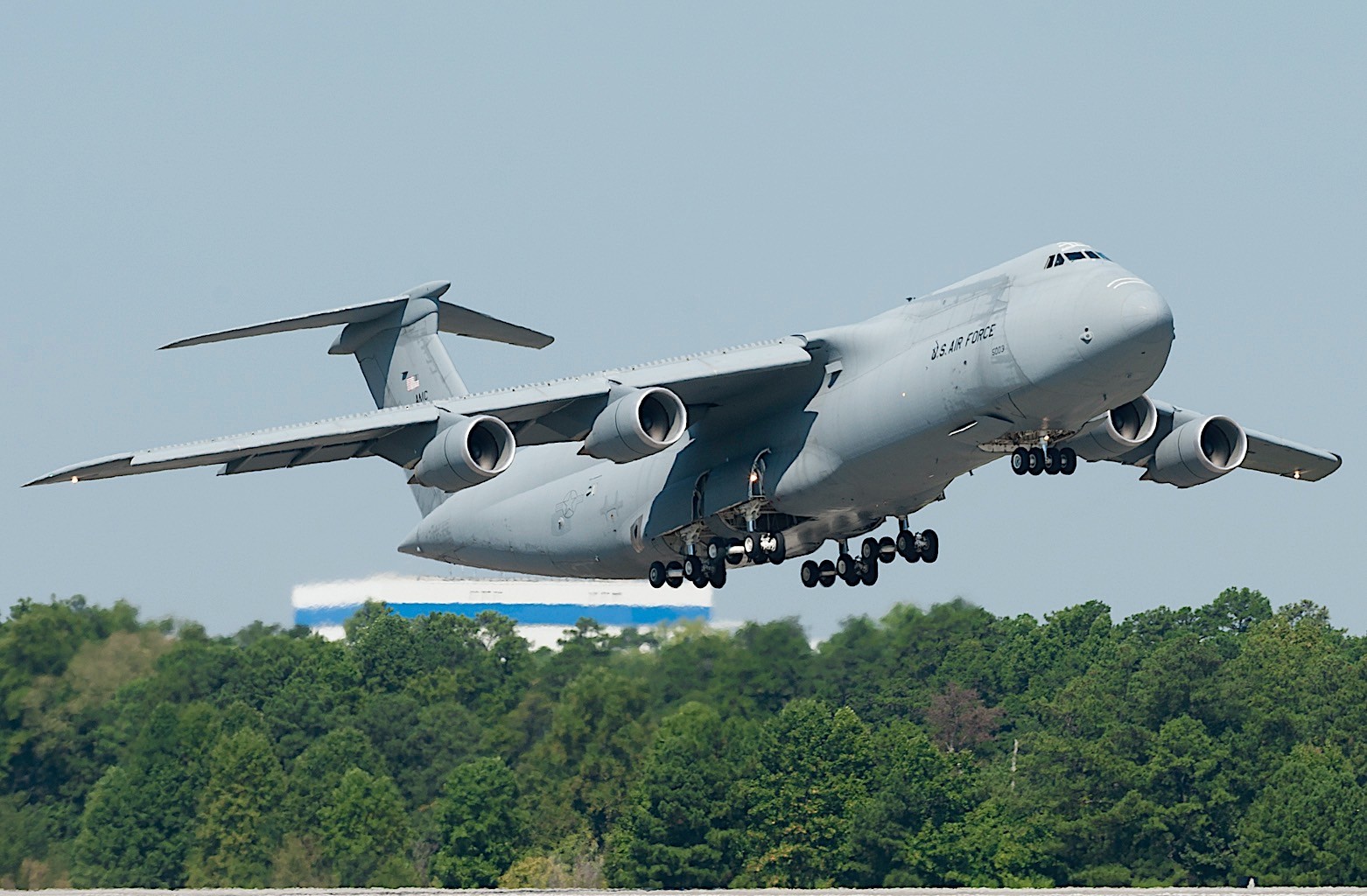C5 Galaxy Engine - The final model of the giant C-5 Galaxy military transport plane entered Oshkosh on Tuesday. When it first took off in 1968, the world's first airplane helped launch commercial aviation.
The plane's first engines, called the TF39, used a design called a high-bypass turbofan, which placed a large fan in front of the plane to regulate thrust. The engines were to be tested on B-52 bombers, an aircraft closest to the size of the giant C-5, capable of lifting 130 tons of cargo and cruising at 5,000 miles per hour.
C5 Galaxy Engine

A pair of CF6 jet engines power the latest C-5 Galaxy aircraft, the C-5M Super Galaxy.
Years Of Silence
Today, all midsize and commercial aircraft use the same engine design, but back then the TF39 was revolutionary. This allowed engineers to increase the engine's thrust to 40,000 pounds and reduce fuel consumption by a quarter compared to other engines in use at the time.
He quickly saw the commercial potential and created a workaround called the CF6. It first flew in 1971, and today it's one of the world's most common jet engines, powering everything from Boeing 747 jumbos — including President Obama's Air Force One — to Airbus long-haul jets and Beluga cargo cranes. . More than 7,000 of them have been supplied to 250 airlines in 87 countries. New versions of the engine are expected to be released by 2040.
The aircraft that landed in Oshkosh - a C-5M Super Galaxy - entered service in 2014 at Travis Air Force Base in California and uses the military version of the CF6 engine. This allows the aircraft to use less runway and take off faster than the original TF39.
But the evolution of the jet engine didn't stop with the CF6. Engineers have used their expertise to create the world's most powerful engine with up to 127,500 pounds of thrust, the nx for the Boeing Dreamliner and 747-8 Jumbo, and the 9X, the world's first engine for Boeing's Next Generation. 777X aircraft.
Lockheed C 5b Galaxy
New materials, such as carbon fiber for the fans and fan housings, and modern designs reduce weight by hundreds of pounds and increase thrust. Recent engines such as the 9X and LEAP, developed by CFM International and a joint venture between France's Safran Aircraft Engines, use 3D printed parts and spacers, even ceramic composites. "Four decades from now, we can print an entire engine this way," said Michael Idelczyk, vice president of advanced technology at Global Research, which was involved in the study.
A massive C-5 Galaxy military transport plane crashed in Oshkosh Tuesday afternoon. The aircraft distributes its weight with 28 wheels with five landing gears.
The new engines produce more than 50,000 pounds of thrust each — a 22 percent increase over the TF39 engines in the original aircraft.

The C-5M flew to Oshkosh from Travis Air Force Base, California. According to Lockheed, the aircraft has a 58 percent increase in its cruising altitude, which is 38 percent higher than the current C-5. This capability provides more than 20 percent fuel savings compared to other fans.
General Electric Cf6
C-5M. With a payload of 270,000 pounds (122,472 kg), the aircraft can cover 2,150 nautical miles. The General Electric TF39 is a high-bypass turbofan engine designed to power the Lockheed C-5 Galaxy. The TF39 was the first high-power, high-thrust jet engine developed. The TF39 was further developed as the CF6 series of engines and formed the basis of the LM2500 marine and industrial gas turbine. On September 7, 2017, the last active C-5A powered by TF39 engines flew its final retirement flight at Davis-Monthan Air Force Base.
TF39 has effectively been phased out and all remaining active C-5 Galaxies are now powered by F138 (General Electric CF6-80C2) engines.
The United States Air Force launched the CX-X program in 1964 to develop a new generation strategic air defense system. In 1965, a new design was selected from among multiple proposals from Lockheed Aircraft and General Electric Genie.
The high-bypass turbofan was a big leap in engine performance, delivering 43,000 pounds of thrust while improving fuel economy by nearly 25 percent.
Big Deal: The Air Force's Largest Transport Craft, Powered By Ge Engines, Taxis Into The Spotlight
The TF39's 8-to-1 bypass ratio, 25-to-1 compression pressure ratio, and 2,500 °F (1,370 °C) turbine temperature are made possible by enhanced forced air cooling. The first gin wt was tested in 1965. Between 1968 and 1971, 463 TF39-1 and -1A Gins were produced and delivered to the C-5A fleet.
The TF39 was revolutionary in the 1960s, with 41,000 to 43,000 lbf (191 to 205 kN) thrust. It introduced the use of a larger bypass ratio which, along with major technological advances, contributed to a significant improvement in fuel economy over the gens of the time.
Today, a typical turbofan with a T-stage fan has a suspended fan rotor (without inlet guide vanes) with one or more T-stages that feed only the main flow.

The name T-stage fan side elevation comes from the overall appearance of the LP compressor shown graphically.
What Is This Large Engine Doing On A B52?
GE took a different approach with their first high bypass ratio turbofan, the TF39. This is a unique, very complex design.
The T-stage, which fills the main flow, is located before the rotor of the main fan. The T-stage itself consists of an overlaid mini-rotor and a set of exiting guide vanes. The main fan rotor is located behind these OGVs. In addition to the T-step rotor there are main inlet guide vanes that only affect the bypass flow. The T-step rotor extends over about half of the main rotor step ring
And he runs into the final cover. The main fan stage has an interstage stage/flow separator that separates the single-stage outer sheet from the two-stage inner sheet.
However, the actual volume of air at level T flows through the bypass duct, with two annular passages leading to the bypass duct. A nominal bypass ratio of 8:1 refers to the ratio of the total bypass mass flow to the HP compressor effort mass flow.
C5 Galaxy Hi Res Stock Photography And Images
The rotor blades are cut. "Snubbers" are protrusions that attach at right angles to the center fan airfoil.
At high speeds, adjacent fans overlap to prevent blade failure due to oscillation.
They can be seen in the outer half of the tube with secondary inlet flaps towards the gene receptor.

The 8:1 high bypass ratio for the TF-39 is based on the lift fan technology demonstrated by GE in the XV-5 Vertifan aircraft.
Lockheed C 5 Galaxy. 2021.
This concept had the turbine-crank-fan rotated 90 degrees and was shown as an 80-inch-diameter "cruise fan" driven by a J79 gas generator.
For the CX-X program, GE used a half-scale engine, the GE1/6, with 15,830 lb thrust and an sfc of 0.336.
Boeing B-52E (serial no. 57-0119) tested with TF39 gen starboard. The TF39 has twice the thrust of its twin Pratt and Whitney J57s that were originally there.
C5 galaxy aircraft, c5 galaxy model kit, samsung galaxy c5, c5 galaxy toy, rc c5 galaxy, c5 galaxy airplane, c5 galaxy model airplane, c5 super galaxy, galaxy c5, c5 galaxy cockpit, c5 engine, c5 galaxy model
0 Comments